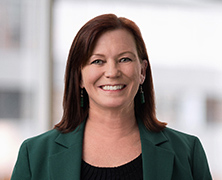CLOSING THE GENDER GAP IN STEM
Dr. Janine Susan has had two interesting STEM careers – first as a scientist and now as a lawyer. She’s striving to pay it forward for the colleagues, mentors, and advisors who listened to her concerns, gave her great advice, and pointed her in the right direction.
Susan went to college intending to major in nuclear medicine, but fell in love with biochemistry, which she says made biology more interesting and gave organic chemistry a reason to exist. With a doctorate in biochemistry and molecular biology and 12 years at the lab bench, it became clear what she really liked about science was learning about it, talking about it with others, and attending fellow researchers’ seminars. She enrolled at law school and took the patent agent exam after her first year.
At Burns & Levinson, she found her perfect match – constantly learning about cutting edge innovations coming down the pipeline, working with a wide range of scientists and inventors, helping them protect the value of their inventions and bring those inventions to market. She has filed patents for clients around the world in industries including chemical, biotech, life sciences, gene therapy, vaccines, antibody, small chemical molecules, and universities.
In the words of Dr. Janine Susan:
What can be done to move women forward in STEM?
“Providing and ensuring access to invested mentors, be they women or men, who show a genuine interest in women students’ development and growth in STEM fields could help to maintain women on a successful path to a career in STEM. Gender inequities need to be addressed. Women in STEM need to be promoted to decision-making committees, boards and speaking engagements so that their ideas and points of view can be considered, and so that they may serve as role models for the next generation of girls in STEM.”
How can the world increase diversity in STEM fields?
“I am a firm believer in the adage that certain things need to be done early and often. To increase diversity in STEM fields, education should start at a very early age, and any naturally displayed curiosity, excitement or interest should be nurtured and developed.”
How is the world changing with respect to STEM?
“The world is becoming a smaller place as a result of advancements in the STEM fields. Technology is disrupting almost every industry in every country around the world. Even our day-to-day activities are impacted by developments and innovations in STEM areas. The food we eat, the way we sleep and exercise, how we travel, how we work, and how we play have all changed and will continue to change due to advancements in STEM.”







